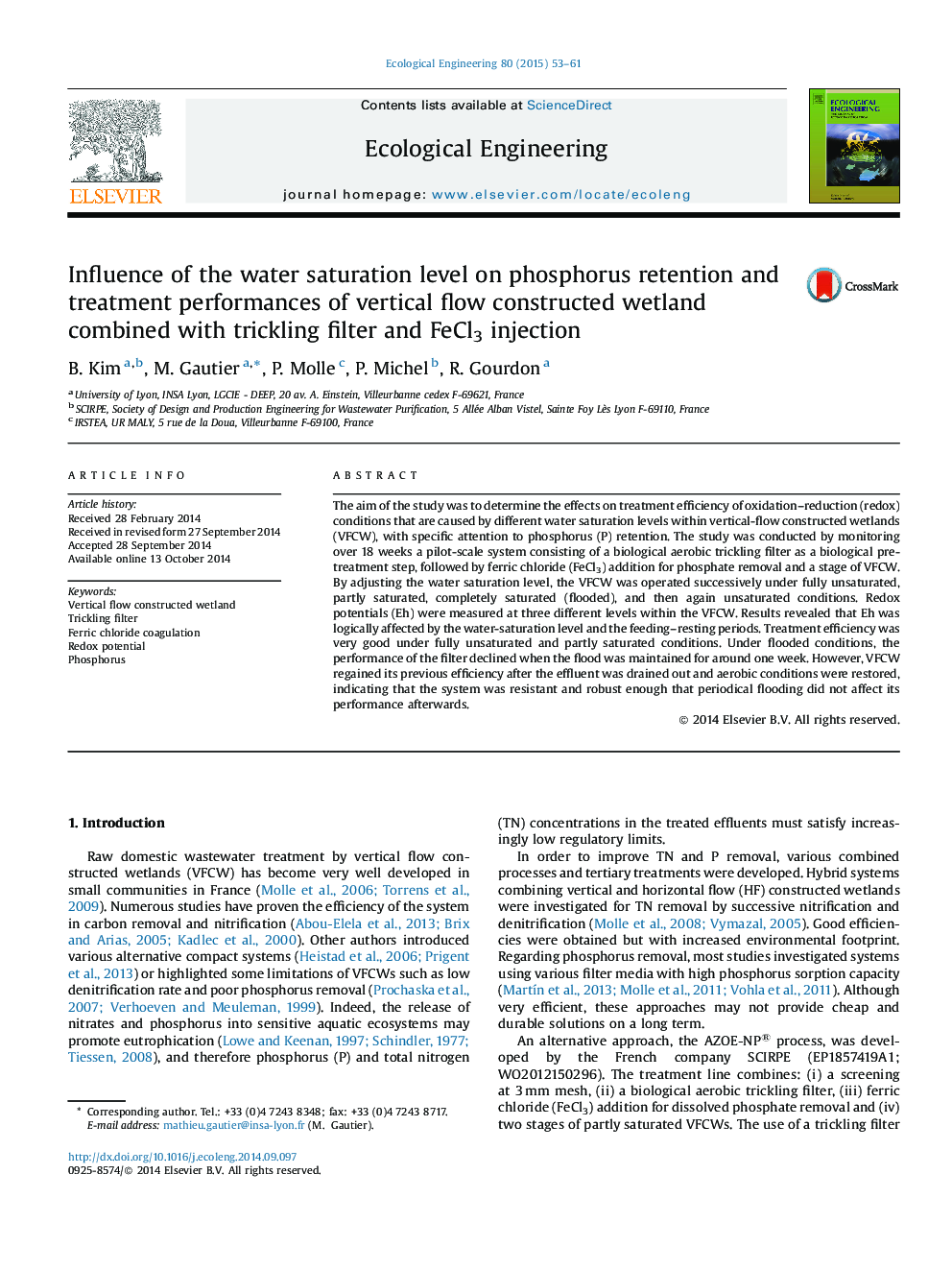| Article ID | Journal | Published Year | Pages | File Type |
|---|---|---|---|---|
| 4389029 | Ecological Engineering | 2015 | 9 Pages |
•Pilot-scale study of combined wastewater treatment processes was investigated.•Trickling filter was a suitable pretreatment for dissolved COD and NH4+ removal.•The FeCl3 injection coagulated 98% of dissolved P.•Influence of water saturation levels on redox conditions in VFCW was measured.•Multi-parameter (P, Fe, Eh, etc.) correlations were studied by PCA.
The aim of the study was to determine the effects on treatment efficiency of oxidation–reduction (redox) conditions that are caused by different water saturation levels within vertical-flow constructed wetlands (VFCW), with specific attention to phosphorus (P) retention. The study was conducted by monitoring over 18 weeks a pilot-scale system consisting of a biological aerobic trickling filter as a biological pre-treatment step, followed by ferric chloride (FeCl3) addition for phosphate removal and a stage of VFCW. By adjusting the water saturation level, the VFCW was operated successively under fully unsaturated, partly saturated, completely saturated (flooded), and then again unsaturated conditions. Redox potentials (Eh) were measured at three different levels within the VFCW. Results revealed that Eh was logically affected by the water-saturation level and the feeding–resting periods. Treatment efficiency was very good under fully unsaturated and partly saturated conditions. Under flooded conditions, the performance of the filter declined when the flood was maintained for around one week. However, VFCW regained its previous efficiency after the effluent was drained out and aerobic conditions were restored, indicating that the system was resistant and robust enough that periodical flooding did not affect its performance afterwards.
Graphical abstractFigure optionsDownload full-size imageDownload as PowerPoint slide
